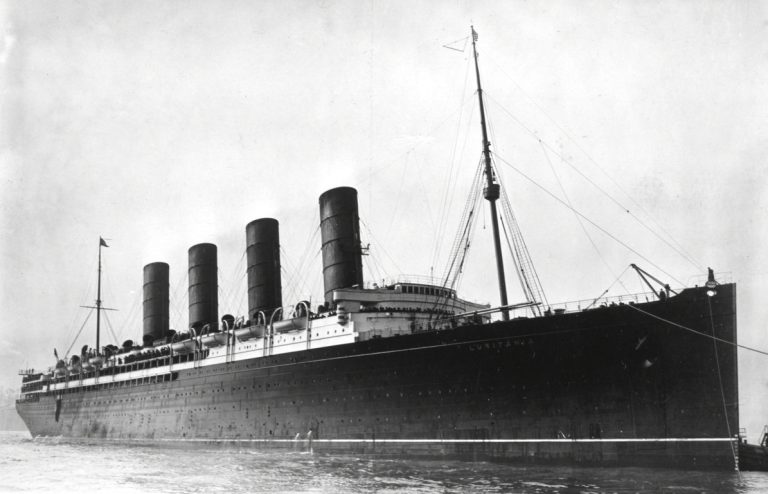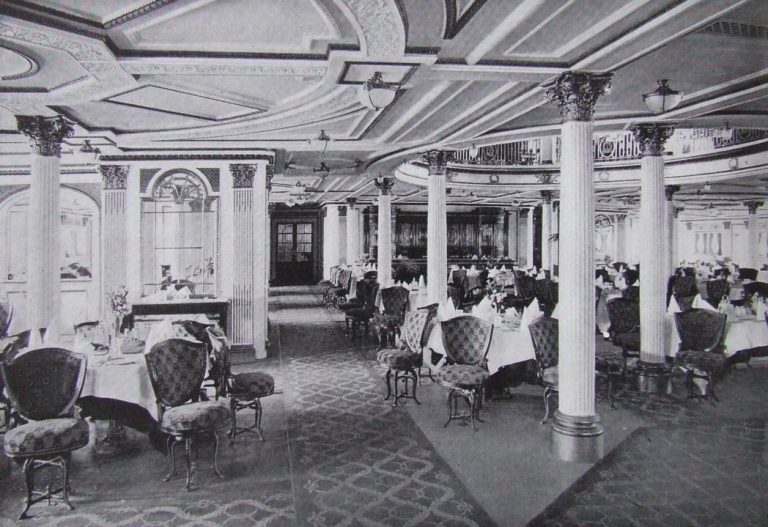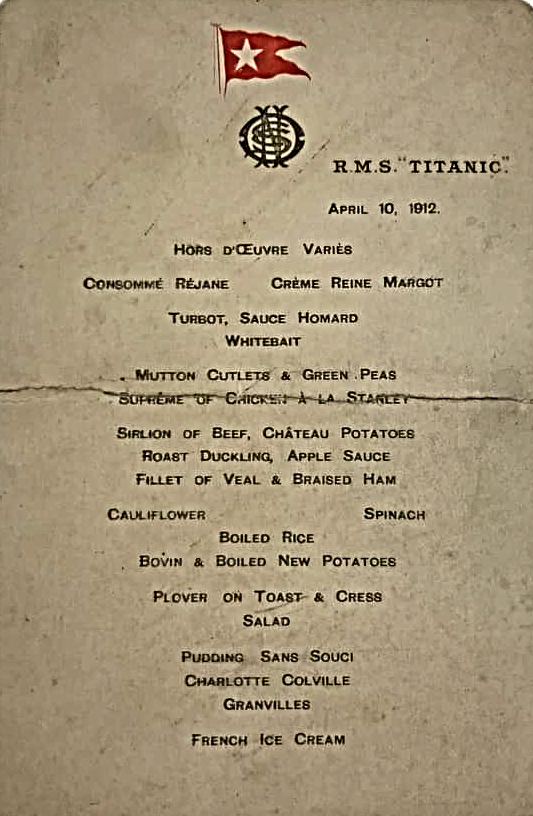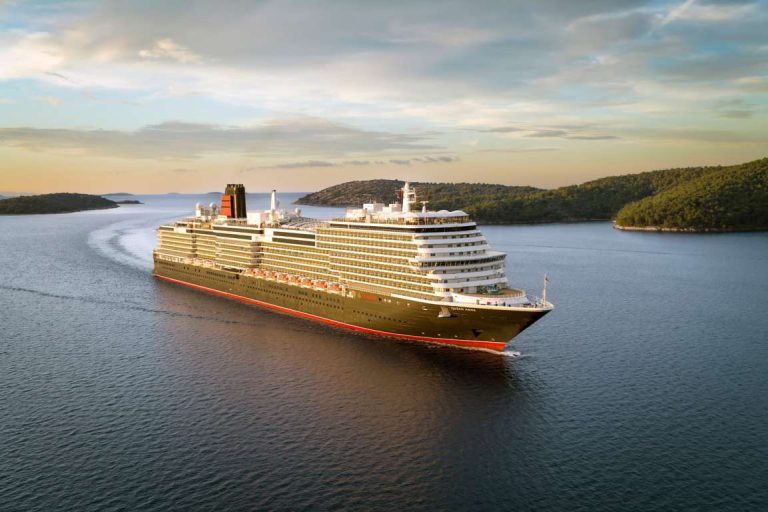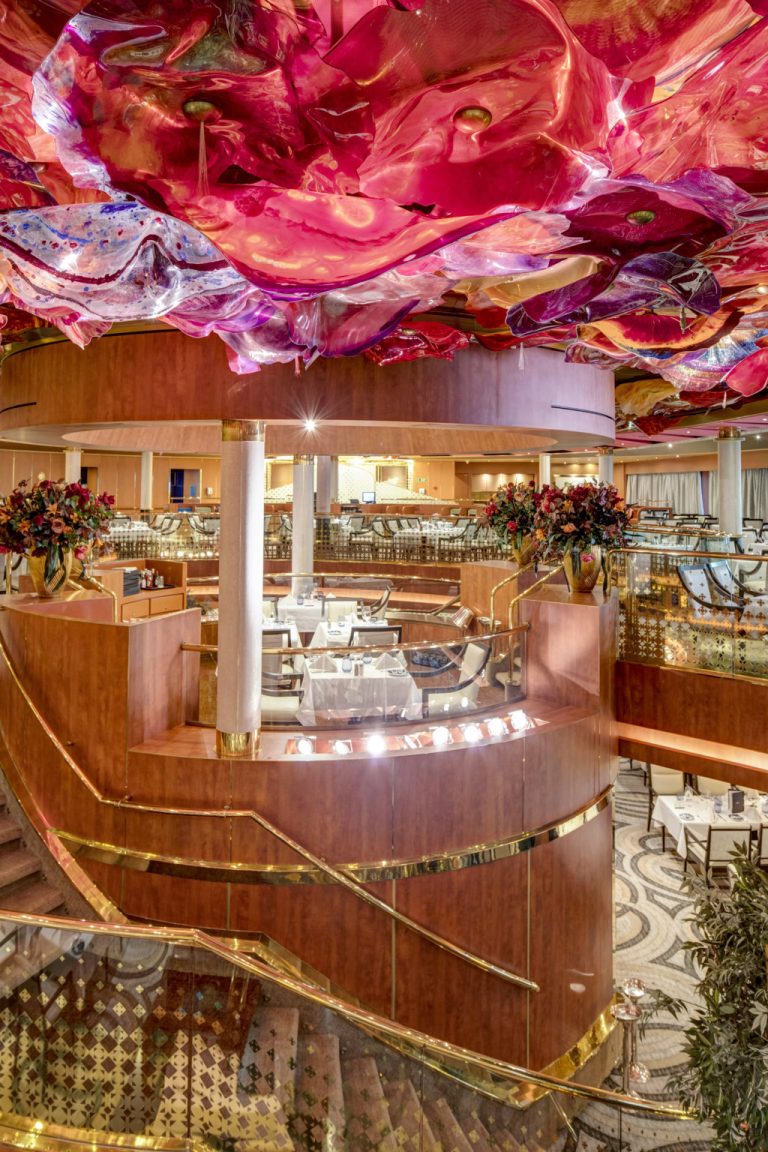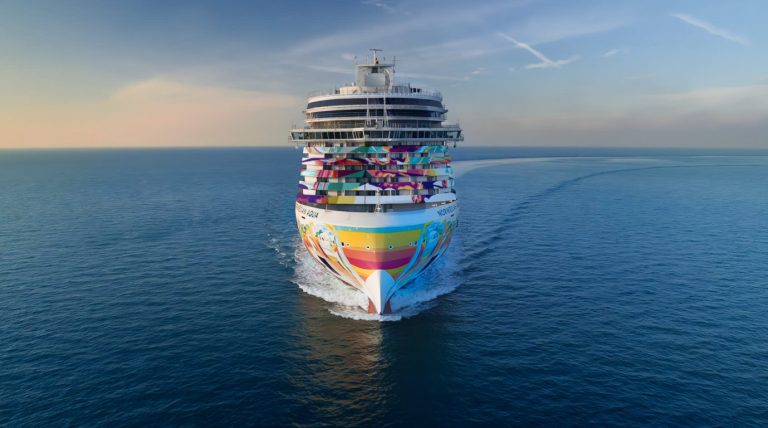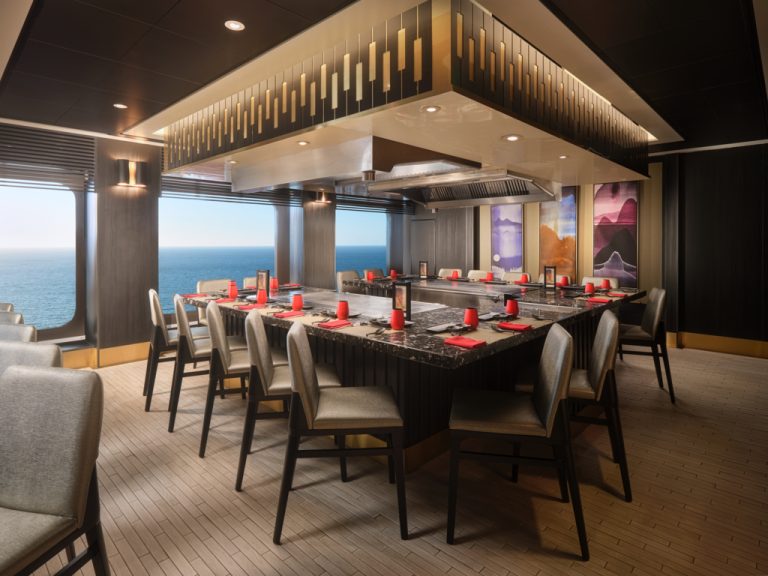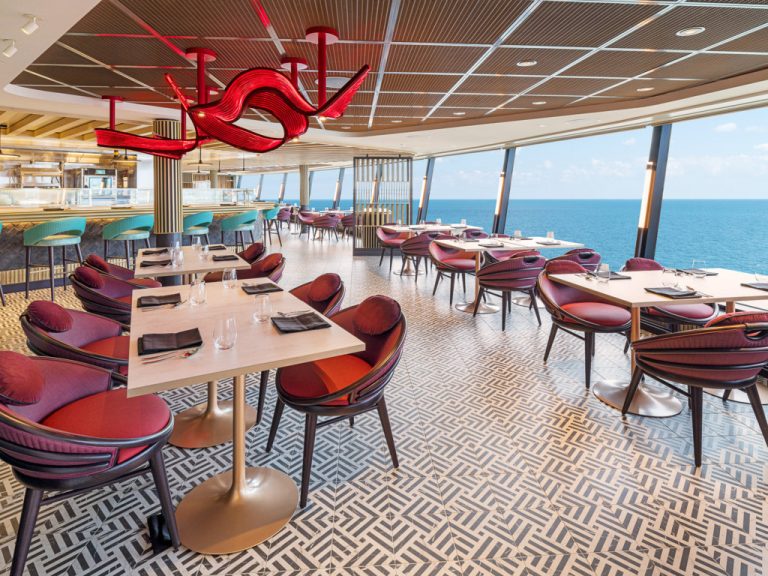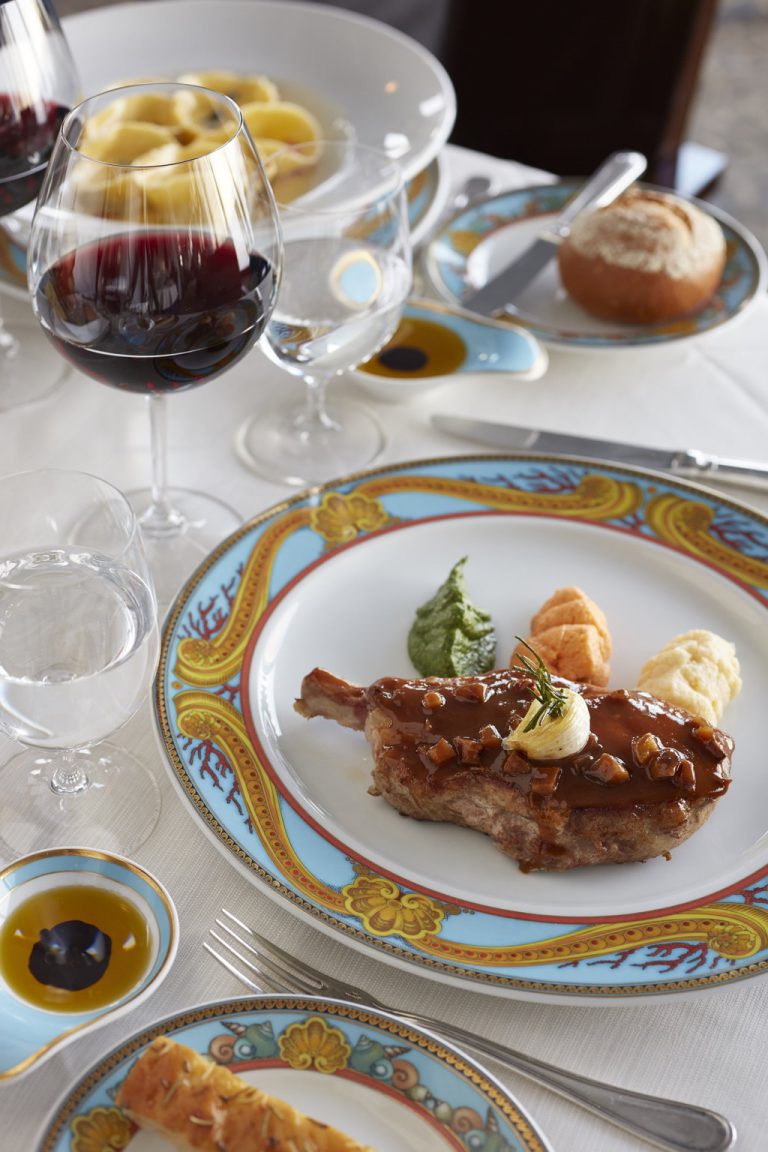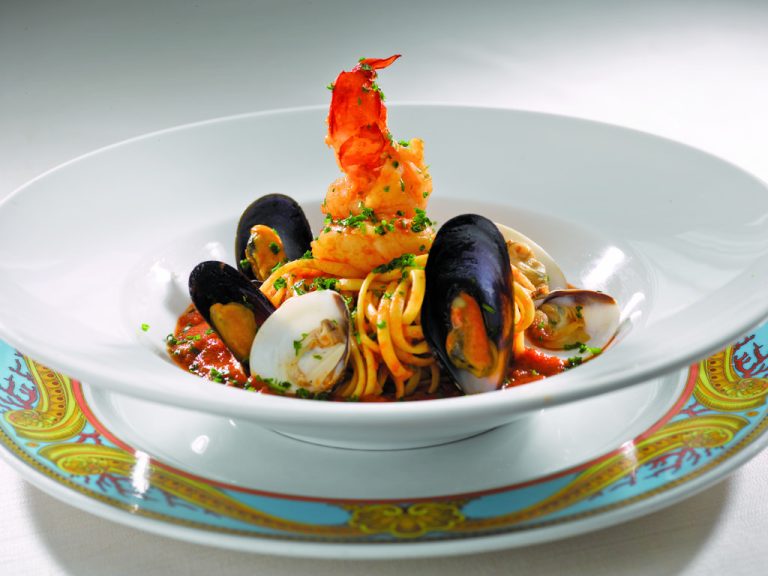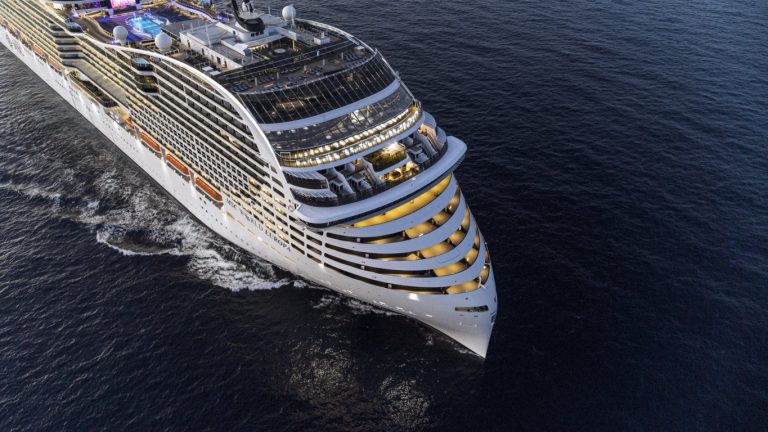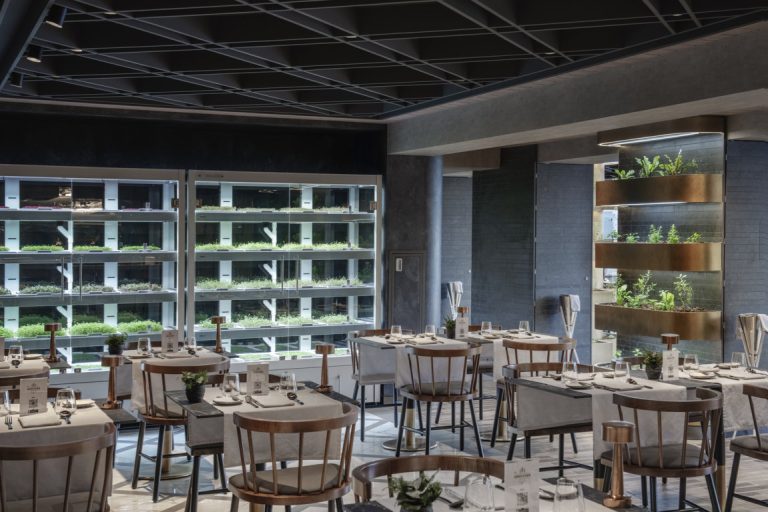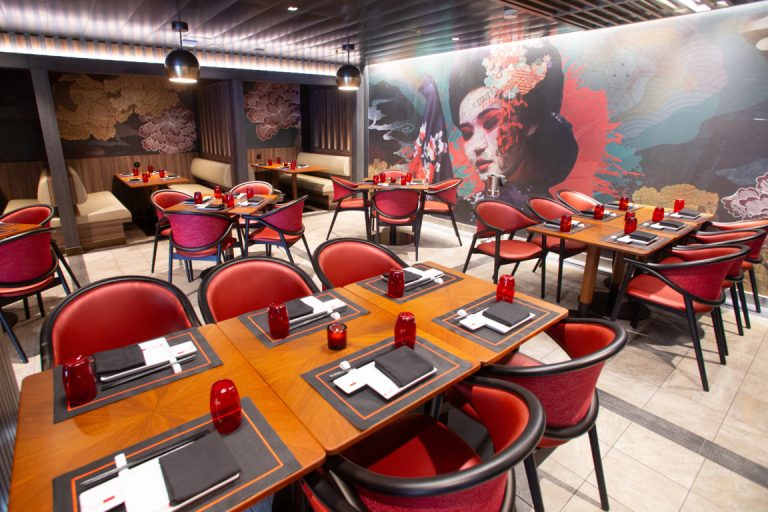The Evolution of Cruise Ship Dining
Cruise ship dining has undergone a profound transformation over the past century, evolving from a mere logistical necessity to a central element of the onboard experience, often considered one of the defining features of a cruise holiday.
This journey mirrors broader cultural, technological, and socio-economic changes, and today, the culinary offerings on cruise ships are as diverse, innovative, and ambitious as those found in the finest restaurants on land. In the early 20th century, when ocean liners such as the RMS Titanic or the Lusitania ruled the seas, onboard dining was heavily stratified according to class. First-class passengers enjoyed multi-course meals in elegant dining saloons, while second and third-class passengers were served simpler, often communal meals.
RMS_Lusitania_coming_into_port,_possibly_in_New_York,_1907-13-crop
The_First_Class_Dining_Saloon_of_the_Lusitania_(lower_level)
First_Class_Titanic_Menu,_April_10,_1912
The focus was on sustenance and basic comfort, constrained by the logistical challenges of feeding hundreds or thousands of passengers on long transatlantic voyages. Food service was regimented, and the concept of variety was limited. There were no alternative restaurants, no open seating, and certainly no celebrity chefs. Menus leaned heavily on preserved goods and traditional European cuisine, emphasizing quantity over culinary finesse. The earliest menus from cruise ships and ocean liners provide a fascinating glimpse into both the culinary norms and the aspirations of early 20th-century travelers. For first-class passengers aboard ships like the Titanic, dining was modeled on the opulent traditions of Edwardian fine dining. A typical dinner menu might include oysters, consommé Olga, poached salmon with mousseline sauce, filet mignon Lili, lamb with mint sauce, roast duckling with applesauce, and a selection of desserts like Waldorf pudding, peaches in chartreuse jelly, and assorted cheeses. These multi-course affairs were served in grand dining saloons adorned with chandeliers, silver cutlery, and formal service provided by white-gloved waitstaff. Meals could span two hours or more and were important social occasions. The use of fine bone china and monogrammed silverware was common, emphasizing refinement and luxury.
Second-class passengers were offered meals of a simpler but still hearty variety, often reflecting middle-class sensibilities. Their menus might include clear soups, roast meats, boiled potatoes, stewed fruits, and rice puddings. The third-class or steerage menus, while nutritionally adequate, were considerably more basic, consisting of plain boiled meats, potatoes, bread, butter, and tea. Dining in third class was communal and functional, with long tables and minimal decoration. Nonetheless, the provision of three daily meals was still a marked improvement over conditions endured by many immigrants in their countries of origin. These early decades also revealed a strong Eurocentric influence on shipboard cuisine, largely driven by the national origins of the shipping lines. British lines emphasized roasts and puddings, French lines brought haute cuisine to sea, and German lines such as Hamburg-Amerika Line showcased sausages, schnitzels, and rich pastries. Kitchens were staffed by classically trained chefs and massive teams of cooks, stewards, and bakers. Provisions had to be carefully planned and rationed, as fresh ingredients could only be stored for a limited time. Refrigeration was limited, and much of the food relied on canning, pickling, and curing.
Queen Anne
408_DP19_DiningRoom_Noordam
During the interwar years and into the post-WWII period, cruise dining began to evolve more deliberately toward comfort and refinement, influenced by improved logistics, better refrigeration technology, and a growing middle-class customer base. Steamships such as the Queen Mary and the SS United States introduced larger galleys and more structured kitchen brigades that mirrored fine hotel kitchens on land. Menus began to reflect broader global influences, incorporating dishes inspired by American, Italian, and even Middle Eastern cuisines as immigrant travel and tourism expanded. The 1950s and 1960s marked a transition from ocean liners as transportation to purpose-built cruise ships as destinations themselves. Lines such as Holland America and Cunard began focusing more on the leisure experience. Dining rooms became central to this concept, with evening meals framed as major social occasions. Multi-course meals were still standard, but ingredients became fresher, dishes more varied, and wine lists more extensive. Some ships introduced themed nights or national menus, reflecting the route or celebrating the ship’s heritage.
The 1970s and 1980s ushered in a more casual, entertainment-driven model of cruising, championed by lines like Norwegian Cruise Line and Carnival. While main dining rooms retained their formal aspects, innovations like midnight buffets and 24-hour snack bars emerged. These elements catered to a younger, more diverse, and more relaxed clientele. The buffet—once a minor addition—gained a central role, providing passengers with autonomy and immediacy in their meal choices. Deckside grills and pizza counters became fixtures, introducing an entirely new level of informal dining previously absent from seagoing tradition. This period also saw the first real experiments with alternative venues. A handful of ships began testing out specialty restaurants with dedicated themes, such as Italian trattorias or steak houses. These spaces were sometimes included in the fare and sometimes required a small surcharge, setting the stage for the revenue model that would later define the specialty dining segment.
norwegianaqua-aerial
ncl-spr-teppenyaki
norwegianaquasukhothai
By the 1990s, cruise companies began leveraging the land-based fine dining boom to elevate their culinary offerings. The introduction of more globally inspired menus, the inclusion of fresh seafood, artisanal breads, and increasingly gourmet desserts marked a shift in focus. Companies such as Princess Cruises, Royal Caribbean, and Celebrity Cruises began to forge partnerships with notable chefs and culinary schools, providing a degree of prestige and brand recognition previously absent from cruise menus. Food became a marketing tool, and the promise of high-quality dining experiences became a selling point in brochures and advertising campaigns. The early 2000s brought a more mature, structured approach to cruise ship dining. Ships were being built with multiple restaurant venues from the start, some of which required reservations and fees, others functioning as part of rotational dining programs. Companies like Disney Cruise Line pioneered immersive dining experiences with story-driven meals and rotating menus across venues. Meanwhile, Norwegian Cruise Line formalized the concept of “Freestyle Dining,” allowing passengers unprecedented flexibility in where, when, and how they dined. This broke from the traditional two-seating system and democratized the dining process.
Dining also began to reflect broader social trends. Vegetarian and health-conscious menus grew more common. Wine pairings, mixology programs, and culinary-themed shore excursions became integrated parts of the overall guest experience. The kitchen and galley infrastructure was significantly upgraded, with cruise ships now featuring wine cellars, open kitchens, and even hydroponic gardens to supply fresh herbs and greens. By the turn of the millennium, food on cruise ships was no longer merely an amenity—it had become a defining feature of the cruise experience, on par with entertainment, service, and destination offerings. This foundational period up to the year 2000 laid the groundwork for the explosive culinary innovation seen in the decades that followed. It transformed the act of dining at sea from a predictable routine into a rich and dynamic experience that travelers eagerly anticipated. The sea, once crossed out of necessity, had become a place of indulgence and culinary delight.
The late 1990s and early 2000s marked a dramatic shift in cruise dining with the emergence of specialty dining venues. These smaller, themed restaurants—often with an extra charge—allowed cruise lines to experiment with world cuisines, ambiance, and personalized service. From steakhouses to sushi bars, French bistros to teppanyaki grills, these venues signaled a pivot toward land-based restaurant trends. This move was both strategic and financial. Specialty dining generated onboard revenue while catering to passengers’ growing desire for customization and exclusivity. It also allowed cruise brands to differentiate themselves and develop signature culinary identities. For example, Celebrity Cruises partnered with Michelin-starred chefs, while Norwegian Cruise Line pioneered the “Freestyle Dining” concept, giving passengers the freedom to dine where and when they pleased without a fixed schedule.
OC_Toscana_Pork Chop.jpg_2025-06-16_07-52-08
OC_Toscana_Cioppino.jpg_2025-06-16_07-52-00
Today, cruise ship dining is a complex and dynamic ecosystem, with offerings that span formal elegance, casual convenience, global experimentation, and intimate exclusivity. The main dining rooms, once rigid in structure, are now more flexible than ever. Many cruise lines offer open seating, multiple MDRs with varying menus, and rotating dining schedules that give passengers freedom and variety. Menus are more globally inspired and cater to diverse dietary needs such as vegan, gluten-free, and low-sodium diets. Buffets remain a popular choice for their immediacy and informality, but they are now designed with hygiene and aesthetics in mind, featuring staff-served stations, refined décor, and more thoughtful food presentation.
Specialty restaurants have become a hallmark of modern cruising. They include a broad spectrum of dining styles, ranging from fine dining options such as French and Italian cuisine to experiential venues focused on molecular gastronomy or curated wine-pairing dinners. Some ships even offer intimate Chef’s Table experiences, where passengers can enjoy multi-course tasting menus prepared before their eyes. At the other end of the spectrum are casual eateries such as poolside grills, cafés, and 24-hour delis, providing quick bites for every palate and schedule. Room service and private dining have also evolved, especially in luxury segments, offering full gourmet meals delivered to suite balconies and even customizable in-suite chef experiences.
Culinary philosophies differ significantly among cruise lines, each projecting its unique identity. Oceania Cruises emphasizes artisanal ingredients, long preparation techniques, and Mediterranean influences, positioning itself as a floating gourmet retreat. Regent Seven Seas Cruises promotes its concept of “Epicurean Perfection,” offering unlimited access to specialty dining and placing a premium on elegance and refinement. Royal Caribbean International takes a different path, focusing on innovation and inclusivity, offering everything from virtual reality dining to globally inspired street food concepts. MSC Cruises blends Italian culinary heritage with international options to appeal to its cosmopolitan clientele. Disney Cruise Line incorporates storytelling into its dining, with rotating themed restaurants that offer interactive and immersive experiences tailored to families.
Msc World Europa
Chef s garden
Izumi on the new Utopia of the Seas
Some cruise lines now employ culinary directors or maintain collaborations with Michelin-starred chefs and world-renowned restaurateurs. These partnerships bring curated menus, seasonal ingredients, and cutting-edge presentation to sea. Vegan and plant-based menus are also gaining visibility, along with sustainability-focused dining that emphasizes local sourcing, low-impact fishing, and zero-waste kitchen practices. Dining is no longer just a passenger service—it is an opportunity to tell a story, promote a culture, and deepen guest engagement. Looking toward the future, cruise dining continues to evolve alongside global culinary trends and technological advancements. Digital innovation is playing an increasing role, with app-based reservations, AI-driven personalized menus, and interactive touchscreens offering tailored dining suggestions based on preferences or dietary restrictions. Sustainability remains a driving force, with more lines embracing farm-to-ship sourcing, biodegradable packaging, and waste-reduction measures. Health-consciousness is expanding menus with calorie-counted dishes, plant-based options, and wellness-focused ingredients such as fermented foods and adaptogens. Cultural immersion is another growing theme, with ships featuring destination-inspired menus that reflect local traditions, sometimes even incorporating ingredients sourced during port calls.
Architecturally, dining spaces are evolving into visual and sensory showpieces. Open kitchens, glass-walled wine cellars, chef demonstration counters, and design-forward interiors transform meals into immersive experiences. Dining venues are now key elements of ship design, as important to a ship’s branding and passenger experience as entertainment venues or spa facilities.
In conclusion, the evolution of cruise ship dining mirrors the industry’s broader transformation—from transportation to vacation, from formality to flexibility, and from mass catering to tailored luxury. Once a background function, food has become a central and celebrated part of the cruising experience. The culinary offering aboard can now be as influential in the booking decision as the itinerary itself. As new ships launch and passengers demand ever greater diversity, creativity, and quality, the future of cruise dining promises continued reinvention, deeper personalization, and an ever-greater celebration of global cuisine. The sea, it turns out, is not just a route—it is a destination for the palate as well.
Don’t miss news, updates, and reviews from the world of cruises on Cruising Journal, with photos, videos, and special cruise deals.

